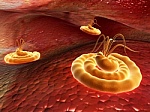What is HIV and AIDS ? HIV is the abbreviated form of Human Immuno-deficiency Virus. This virus causes Acquired Immuno Deficiency Syndrome or AIDS. Thus, HIV is the name of the virus and AIDS is the name of the disease.
What is HIV and AIDS ?
As the name AIDS implies, it is a condition where there is deficiency in the body’s natural defense mechanism or immune system. It is “acquired” because it is not a hereditary condition or due to long term use of some medicines, such as those for treatment of cancer.
Hereditary means conditions that are passed on from one generation to another. This means that AIDS is acquired because of some behavioural patterns. Syndrome means a group of symptoms.
When one gets AIDS, there can be a wide range of symptoms, all of which are due to the body’s diminished ability to fight diseases.
It is important to remember that everyone who has HIV infection will develop AIDS over a period of time depending upon their general health and natural defense mechanism of the body.
Facts about HIV and AIDS
Few diseases have been feared as much as HIV/AIDS has been ever since human beings began efforts to prevent and control major diseases. History is witness to several successful attempts of mankind in eradicating, controlling or preventing major causes of death or disability.
Eradication of smallpox and control of diseases such as polio, measles, tetanus, etc through vaccines etc are examples of human beings triumph over several killer diseases.
Although a large number of health problems continue to defy human efforts to control them, none of them presents a challenge greater than the prevention and control of HIV/AIDS.This is mainly because at the moment there is neither a scientifically proven cure for HIV/AIDS nor a vaccine to prevent it.
Several misconceptions about the causes and mode of transmission of HIV/AIDS exist in India. These misconceptions and the social stigma associated with AIDS have been major barriers to prevent and control the diseases.
They have also been major hurdles in providing the desirable social and medical support to people with HIV infection. All predictions related to the spread of HIV infection in India portray a very grave situation unless active measures are taken to prevent and control the infection.
In response to this grave threat, several donor agencies such as World Health Organization, World Bank, United Nation agencies etc have provided funds to the Government of India’s National AIDS Control Programme.
Several non-governmental and other agencies have been supplementing the government effort to control HIV/AIDS in India. Although these efforts have been substantial, much more needs to be done to prevent and control the diseases.
Every individual effort can go a long way in preventing the rapid spread of HIV/AIDS in India and helping those living with HIV lead a life with dignity.
What is HIV and AIDS ? Facts and figures and history about HIV and AIDS
As mentioned earlier, HIV/AIDS is a relatively new health problem. In 1981, several medical practitioners in USA were puzzled because a large number of young men were developing pneumonia due to a new type of bacteria or a rare type of skin cancer called Kaposi’s sarcoma.
Both these diseases were earlier observed only observed in people with damaged natural defense mechanism of the body. In addition these patients had several other infections also. Pneumonia is the term used for inflammation of the lungs due to any diseases causing agent. The most common cause of pneumonia is the bacteria called pneumococcus.
Initially, symptoms of pneumonia and kaposi’s sarcoma were observed only in homosexual men, but soon they were found in other sections of the society such as those with haemophilia or those who are intravenous drug users.
Haemophilia is a hereditary disease where the blood lacks some essential components necessary for the clotting of the blood and healing of wounds. Intravenous means injecting a substance into the veins.
Thus the medical practitioners concluded that the diseases spread through sexual route among the homosexuals and blood route among the intravenous drug abusers or those requiring regular transfusion of blood or blood products.
By 1982, it was evident that a new disease had emerged. During this time, doctors in Africa also came across people with unusual symptoms. It soon became evident that the new disease in the US and Africa were one and the same.
The virus that caused the disease was first identified and isolated independently in 1984 by scientists in France and the US. This new virus was called HIV in 1986.
Subsequently one or more virus was identified which was also capable of producing signs and symptoms of AIDS. The virus, first isolated was called HIV-1 and the virus identified later was called HIV -2.
The origin of HIV viruses and AIDS is still a mystery. There have been three main theories about its origin but none of them have been proven so far. In fact all of them have limitations.
The first theory is that the HIV existed in a small isolated community and was somehow transmitted to the outside world. The second theory is that it may have been transmitted from an animal, such as monkey.
The third theory is that some existing viruses may have changed their genetic structure and therefore developed a new variety of the virus. It is important to remember that all the three theories have several deficiencies and therefore the origin of HIV remains unknown.
Also, understanding the origin of the virus may not contribute in developing strategies to prevent and control HIV infection.
RELATED TOPICS
Best coffee brands in the world
Health insurance companies in UK


